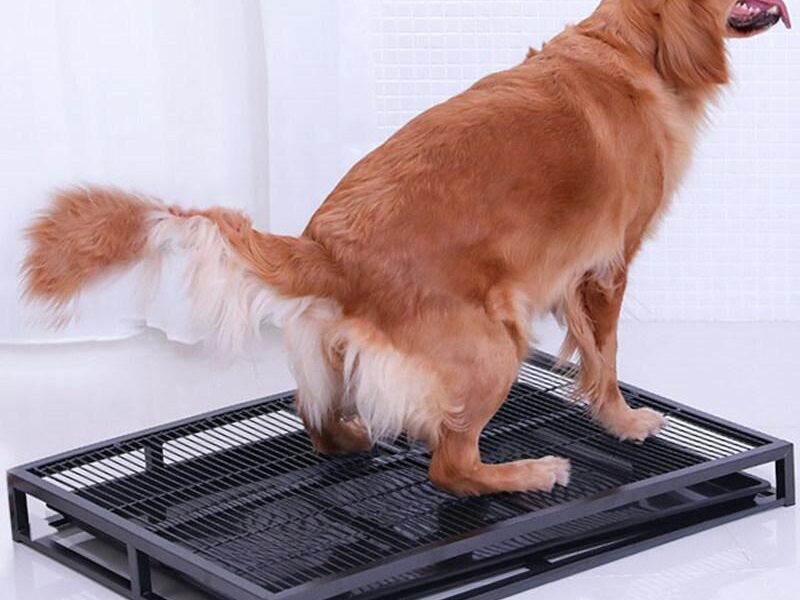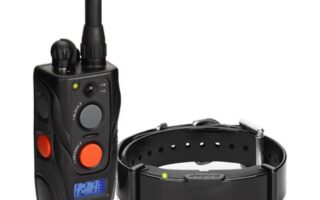In a world where convenience meets innovation, our furry companions are increasingly finding themselves at the forefront of creative solutions designed to simplify pet ownership. Among these innovations, the dog litter box has emerged as a practical alternative to traditional outdoor bathroom breaks, catering to the needs of urban dwellers and busy pet parents alike. Gone are the days when our four-legged friends had to endure harsh weather or long waits outside; the dog litter box offers a tidy, indoor solution that promotes cleanliness and comfort. As we delve into the benefits, options, and best practices surrounding this game-changing accessory, we invite you to explore how this simple tool can enhance the lives of both dogs and their humans, making every day a little easier and a lot more enjoyable.
Table of Contents
- Exploring the Benefits of Dog Litter Boxes for Indoor Relievers
- Choosing the Right Type of Dog Litter Box for Your Pets Needs
- Maintaining Hygiene: Essential Tips for a Clean Dog Litter Box
- Training Your Dog to Use a Litter Box: Step-by-Step Strategies
- Q&A
- Key Takeaways
Exploring the Benefits of Dog Litter Boxes for Indoor Relievers
The introduction of dog litter boxes offers a modern solution to pet owners seeking indoor potty solutions. These specially designed boxes can significantly reduce the hassle associated with traditional indoor relief methods, providing both pets and their owners with a more convenient experience. Benefits include:
- Hygienic Options: Keeping mess contained helps maintain cleanliness in your home.
- Easy to Clean: Most models feature removable trays for effortless maintenance.
- Space Efficient: Perfect for small apartments where outdoor access may be limited.
- Training Aid: Assists in the house-training process by offering a designated spot.
Moreover, dog litter boxes can also provide a sense of security for pets, especially during inclement weather or late-night hours. This can alleviate anxiety for both dogs and their owners while ensuring that your furry friend has a reliable space to relieve themselves. Consider the following features when choosing a litter box:
| Feature | Benefits |
|---|---|
| Size Options | Accommodates different breeds comfortably. |
| Material Choices | Durable materials for long-lasting use. |
| Odor Control | Prevents unpleasant smells and maintains freshness. |
Choosing the Right Type of Dog Litter Box for Your Pets Needs
When selecting a litter box for your dog, it’s essential to consider both the size and the breed of your furry friend. Larger breeds may require a more spacious box, while smaller dogs might prefer a compact option that fits comfortably in your living space. Additionally, the height of the box should accommodate your pet’s abilities to enter and exit easily. Look for features that support their natural behavior, such as low entry points for older dogs or those with mobility issues. Options also vary in terms of design:
- Open-top boxes: Ideal for dogs that prefer an unobstructed view.
- Covered boxes: Provide privacy and help contain odors.
- Self-cleaning boxes: Minimize maintenance while keeping the space fresh.
- Disposable liners: Offer a convenient option for easy clean-up.
Additionally, consider the type of material and added features that suit your pet’s personality and needs. Plastic boxes are lightweight and easy to clean, while wooden or eco-friendly materials can enhance the aesthetics of your home. Some models come with scented options to help control odor, or training pads that can be beneficial during potty training. Here’s a quick comparison of popular types of dog litter boxes:
| Type | Pros | Cons |
|---|---|---|
| Open-top | Good ventilation, easy access | Odor may escape |
| Covered | Odor control, privacy | May feel cramped for larger dogs |
| Self-cleaning | Minimal effort required | Higher cost |
| Disposable liners | Convenient, easy to replace | Less eco-friendly |
Maintaining Hygiene: Essential Tips for a Clean Dog Litter Box
To ensure a pristine environment for your canine companion, regular maintenance of the litter box is paramount. Start by establishing a consistent cleaning schedule that aligns with your dog’s habits. It’s often recommended to clean the box at least once a day to remove waste and control odors. To make the task easier, consider using a high-quality scoop with a slotted design that allows clean litter to fall through. Additionally, having a litter mat can help catch any stray particles, keeping the area tidy.
When it comes to the type of litter you choose, opting for clumping clay or biodegradable options can enhance odor control and ease of cleaning. Regularly replace the litter entirely every few weeks, and sanitize the box using a mixture of water and vinegar or a mild pet-safe cleaner. Keep an eye on your dog’s preferences as well; some may develop a preference for a specific type of litter, so be attentive to their comfort and well-being. To summarize, here are some key points:
- Daily cleaning to remove waste and prevent odor buildup.
- Use a quality scoop that makes the job easier.
- Consider a litter mat for trapping stray litter.
- Choose a litter that controls odors effectively.
- Regularly sanitize the box with pet-safe solutions.
Training Your Dog to Use a Litter Box: Step-by-Step Strategies
Training your dog to use a litter box requires patience and consistency. To start, you’ll need to choose a suitable litter box that accommodates your dog’s size. Consider a box with low sides for easy entry, and fill it with dog-specific litter to make the transition smoother. Place the litter box in a quiet, accessible location where your dog can feel safe and undisturbed. Begin the training process by encouraging your dog to explore the box. You can do this by:
- Using positive reinforcement, like treats and praise when your dog shows interest in the box.
- Gently guiding your dog to the box after meals or naps, as these are the typical times they need to relieve themselves.
- Keeping a consistent schedule to help your dog understand when to use the box.
As your dog becomes more familiar with the litter box, it’s essential to monitor their progress. If accidents happen, don’t scold your dog; instead, clean the area thoroughly to eliminate odors that may attract them back. It may also help to keep a record of their potty habits—this can guide you on when they typically need to go. Here’s a quick reference table for common training cues and their purposes:
| Training Cue | Purpose |
|---|---|
| After Meals | Encourage use of the litter box at peak times. |
| After Naps | Prompt your dog to use the box after waking. |
| During Playtime | Use it as a break to refresh and use the box. |
Q&A
Q&A: The Innovative Solution of Dog Litter Boxes
Q1: What exactly is a dog litter box?
A1: A dog litter box is a designated space for your furry friend to relieve themselves indoors, often filled with specially designed materials that absorb moisture and control odors. While traditionally associated with cats, this innovative concept is gaining traction among dog owners looking for a convenient, hygienic solution for indoor potty needs.
Q2: How does a dog litter box work?
A2: These boxes typically contain absorbent materials like grass, pellets, or synthetic turf that mimic outdoor surfaces. When your dog uses the box, the materials absorb the waste and help neutralize odors. Some designs even feature built-in drainage systems or self-cleaning capabilities to simplify the cleanup process.
Q3: Are dog litter boxes suitable for all breeds?
A3: While many dogs can adapt to using a litter box, the size and breed of your dog may influence its effectiveness. Small to medium-sized breeds tend to adjust more easily, while larger breeds may require more space or even a larger box. It’s best to assess your dog’s comfort and willingness to use the box before making a commitment.
Q4: What are the benefits of using a dog litter box?
A4: Dog litter boxes offer several benefits: they provide a convenient indoor bathroom solution, particularly for apartments or homes with limited outdoor access. This setup can be invaluable during inclement weather, for elderly dogs with mobility issues, or for busy owners who may not always be able to take their dogs outside promptly.
Q5: How do I train my dog to use a litter box?
A5: Training your dog to use a litter box can be a gradual process. Start by placing the box in an easily accessible area and encourage your dog to explore it. Use positive reinforcement, treats, and praise to reward them when they show interest or successfully use the box. Patience and consistency are key to helping your furry companion form a new habit.
Q6: Is it difficult to maintain a dog litter box?
A6: Maintenance is straightforward but does require regular attention. Clean the box daily, replace the absorbent materials as needed, and ensure the area remains odor-free. Depending on the type of box you choose, additional features may make upkeep easier, such as removable trays or self-cleaning options.
Q7: Can I use a dog litter box outdoors?
A7: Absolutely! Many owners utilize outdoor dog litter boxes as a designated potty area in their yards, especially for dogs that may be hesitant to potty on grass or dirt. Outdoor boxes can be fitted with grass or similar materials, providing a familiar spot for your dog to do their business while keeping your yard tidy.
Q8: Are there any drawbacks to using a dog litter box?
A8: While dog litter boxes offer many advantages, they also come with considerations. Some dogs may refuse to use the box, preferring outdoor potty spots instead. Additionally, not all owners find them suitable for larger dog breeds. It’s crucial to evaluate your pet’s personality and needs before fully committing to this potty solution.
Q9: Are dog litter boxes eco-friendly?
A9: Many dog litter box options are designed with the environment in mind, using biodegradable materials and sustainable practices. When selecting a product, look for eco-friendly brands that prioritize sustainable sourcing and manufacturing processes, helping you maintain your commitment to a greener lifestyle while caring for your canine companion.
Q10: Where can I find a dog litter box?
A10: Dog litter boxes are increasingly available at pet supply stores, both in physical locations and online. Retailers often carry a variety of designs and materials, so you’re likely to find one that suits your needs and fits your space. Just be sure to do some research and read reviews to select the best option for you and your pup.
dog litter boxes can be a game-changer for many dog owners, providing a practical indoor potty solution while maintaining cleanliness and convenience. With the right approach, training, and maintenance, you can create a comfortable and effective bathroom spot for your four-legged friend!
Key Takeaways
As we conclude our exploration of the canine litter box, it’s clear that pet care innovation has evolved to meet the needs of modern dog owners. With a little patience and training, this ingenious solution offers convenience, cleanliness, and consideration for both your furry friend and the environment. Whether you reside in an apartment, experience inclement weather, or simply seek an alternative to traditional outdoor bathroom breaks, the dog litter box stands as a testament to our ever-adapting relationship with our pets. Embracing this trend means stepping into a world where pet ownership harmonizes with the practicalities of daily life, ultimately enriching the bond between you and your canine companion. So, as you contemplate integrating this inventive approach into your routine, remember that every wag of a tail signals a new adventure waiting to unfold!



